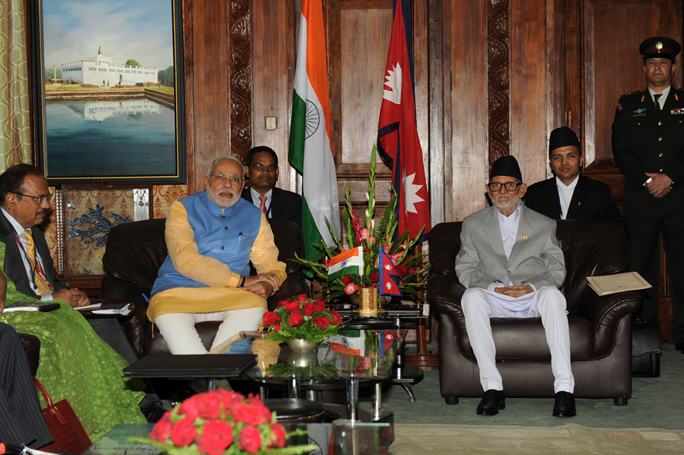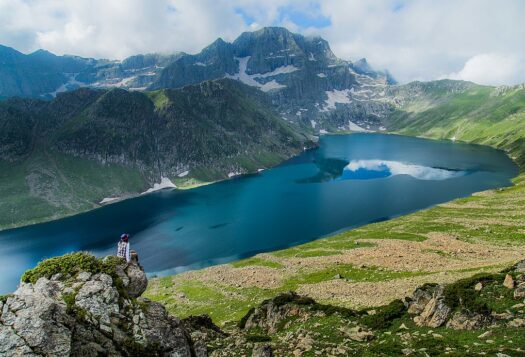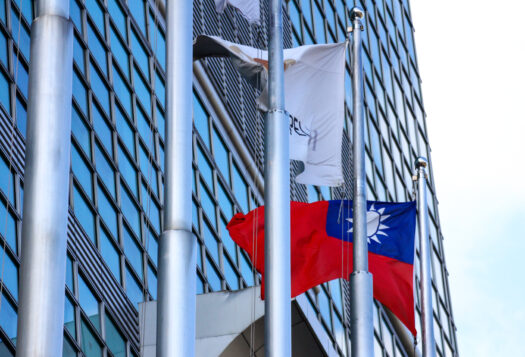
Continued troubled relations with India played a shaping role in the foreign and domestic affairs of 2016 for Nepal. This article reviews the major hurdles in the relationship over the last year and charts a route forward for getting Nepal-India relations back on track.
Nepal and India have a unique relationship. It needs to be seen from shared historical, social, and cultural standpoints, and not merely through the lens of political or economic relations between two sovereign states. One of the major factors for the development of the relationship is the proximity of the peoples between two countries, which is commonly referred to as ‘roti-beti ka rishta’. Though Nepal officially maintains a stance of equal relations with both of its immediate neighbors India and China, due to shared cultural and historical roots, Nepal maintains stronger ties with India. However in recent years, the relations between the two have not been as cordial as one might expect. Over the years, strong sentiments against Indian intervention in the internal affairs of Nepal and a perception of pro-India bias in the bilateral treaties signed, has resulted in negative feelings towards India. These feelings, which have been building up over the years, reached a new height at the end of 2015 when the Nepalese felt bullied by India’s imposition of an unofficial trade obstruction “blockade” after the promulgation of Nepal’s new constitution. Disgruntled by India’s behavior, which were perceived by many in Kathmandu as supporting destabilizing actions by protesting political parties in southern Nepal, major leaders of Nepal (including then Prime Minister Oli) openly advocated for Nepal having closer relations with its northern neighbor, China.
In an attempt to strengthen its position in the neighborhood, especially in Nepal, India has been aggressively pursuing its neighborhood policy by increasing engagement and promising infrastructure development, aid, and loans. In spite of this, India has not been able to achieve a desirable result and Nepal-India relations require revitalization.
Insensitivity Towards Perception
Given India’s proximity to Nepal, India has always played major role in any political transformation in Nepal. Nepalese do appreciate support provided by such involvement. But what is mostly overlooked in these situations is that due to the very role that India plays in such transformations, they are seen with suspicion by any new center of power. This constant distrust, coupled with dangerous past actions of India like the annexation of Sikkim, another small Himalayan nation, fuel suspicion towards India and its ‘hidden agenda’. Making matters worse, rival political parties in Nepal attempt to score points by openly criticizing any agreements with India as selling-out, unequal, or treasonous. Such criticism can be genuine but is also often opportunistic and playing into the anxiety of people, reinforcing suspicion about India’s motives. This development of negative public sentiment, overlooked during the monarchy, has now increased in significance in the newly democratic republican Nepal.
Support & Suggestion―> Welcomed !
Interference in our Sovereignty―> We won't remain silent. #backoffindia pic.twitter.com/tRJZ7H8mw0— Sagar Pokhrel (हात धोऔ, मास्क लगाऔ) (@NepaliSagar) September 22, 2015
New Found Significance of Public Opinion
India bashing by politicians and lack of engagement by the Indian establishment to counter such arguments allowed unhindered flourishing of a negative view of India in Nepal. Though India maintains constant engagement between top leadership at the civil society level, there has been very little engagement with the emerging middle class. Understandably, the sentiment of the people was never a concern for the Indian establishment as any issues in the bilateral relationship could be easily solved through engagement with royal courtiers and political leadership.
After the people’s protest of April 2006, popularly known as Jana Andalon II, following the royal coup of 2005, the new parliament abolished the monarchy and declared Nepal a republic, which was subsequently endorsed by the first meeting of the Constitutional Assembly in 2008. This changed in political system had a profound impact on India’s sway in Nepal, necessitating new modes of political engagement that take into account public opinion.
Indian Prime Minister Modi’s New Initiative
Taking note of the implications of the increasing gap between India and the Nepal, Indian Prime Minister Narendra Modi worked to counter the negative narrative of Indian aggression. In his first visit to Nepal in 2014, he assured the Nepalese of their sovereignty. He also articulated that the water of Nepal and Lumbini, the birthplace of Buddha, which Nepalese often believe India wants to take away, belongs to Nepal. The high profile visits was very successful in short term, however, the fallout after constitution enactment reflects that it was not enough to eradicated buildup of years of grievances between two Nepal-India nation. Additional high-level interaction of this nature would bolster relations.
A Way Forward
India is a dominant power in South Asia, with significant geographical size and a large economy. Thus it is natural that India will continue playing a vital role in influencing the region—a fact which smaller nations like Nepal need to reconcile with. Similarly, it is natural for smaller nations in the region to feel overwhelmed by the big brotherly attitude of India, even if it is not intentionally acting in that manner. India therefore needs to shows sensitivity and magnanimity while dealing with its smaller neighbor. It is important to note that in a close relationship like that of Nepal and India, bound by geography, history, culture, and people-to-people relations, politics of denial will not succeed for long. Ultimately, short-term political expediency must make way for the inevitability of close, cooperative Nepal-India relations.
Built up negative perceptions will not change quickly. Change will require persistent effort over the coming years, but the most impactful of many options is for India to focus on supporting the growth of Nepal’s economy. India can help not only by investing in hydroelectricity projects like Upper Karnali Arun III, but also by equally focusing on timely completion of pledged infrastructure projects like Amlekganj-Rauxaul petroleum pipeline project, a cross border railway line, and cross boundary road connectivity. This kind of investment will not only earn immense goodwill for India, but will also bind the two economies together forcing each state to look after their mutual interests.
The second most important avenue for improving relations is people-centric diplomacy. Initiatives like visits of high ranking officials and leaders of the two countries will remain key. In a modern democracy, especially in Nepal where domestic policy and foreign policy often get blurred, it is essential to keep people at the center of diplomacy. However, being frustrated with the Nepalese politicians for not controlling anti-India sentiment is not a solution. Furthermore, India should not misunderstand the overhyped ‘anti-India sentiment’; actual hate towards India is minimal. The majority of the Nepalese want to have closer relations with India but strongly detest Indian intervention in Nepal’s internal affairs.
Image: Narendra Modi, Flikr


